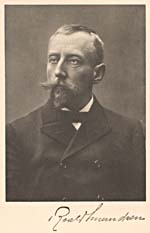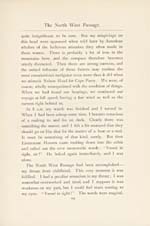|
See Also Roald Amundsen - Passageways: True Tales of Adventure for Young Explorers |
ROALD AMUNDSEN NAVIGATES THE NORTHWEST PASSAGERoald Englebert Gravning Amundsen
|
 |
| Roald Amundsen Copright/Source |
In 1903, Amundsen and his companions sailed to the west coast of Greenland, reached Baffin Bay and entered Lancaster Sound. Then, following Peel Strait, they dropped anchor in a bay that Amundsen called Gjöa Harbour, on King William Island, where he spent two winters. During his stay in the Arctic, Amundsen met ten groups of Inuit. He demonstrated great interest in their lifestyle and adopted their type of clothing. From them, he learned how to build igloos, and how to hunt and fish. In the account of this voyage, Amundsen spoke of deterioration in the lifestyle of Inuit who have been in contact with Europeans compared to those who have had no contact with them.
If Amundsen's primary objective was to go through the Northwest Passage, the mission for which he had received financial support was to see if the magnetic pole that James Clark Ross had found in 1830 was still in the same location, something which was questioned at the time. Amundsen's scientific research relocated the magnetic pole more than 50 kilometres northeast of the position set by Ross over 70 years earlier.
On August 13, 1905, Amundsen again sailed west. He went through Simpson Strait, south of King William Island, a treacherous strait strewn with ice and barely submerged rocks. He then crossed the Gulf of Queen Maud and entered Dease Strait to come out at the other end of Dolphin and Union Strait into the gulf that bears his name today. This period, he wrote, comprised "the three longest weeks of my life". He was rewarded, though. On August 27, 1905, while resting in his cabin, Amundsen heard one of his companions cry, "'Vessel in sight!'" A whaler was coming from the west. Moved, Amundsen realized that his childhood dream had just come true. He had crossed the Northwest Passage and he knew that he could complete the rest of his trip.
 Title page of Amundsen's account Copyright/Source |
 Page from Amundsen's account Copyright/Source |
|
August 27, 1905: (Amundsen, London 1908) |
On September 2, however, the ice held him a little west of the mouth of the Mackenzie. Impatient to announce his accomplishment, Amundsen left by sledge with the Inuit who brought the whalers' mail and went to Eagle City, Alaska, 800 kilometres from the coast, to send a telegram to Fridtjof Nansen, then returned to his ship. He reached Bering Strait the following summer and arrived in Nome, on the southern coast of Alaska, in August 1906.
Amundsen's voyage is important because it was the first time that a ship sailed the Northwest Passage. The explorer had gone through great moments of anxiety before the unknown and had faced difficulties sailing in the northern ice. His success lay in his masterful navigation, good preparation and his adaptation to the environment.
 |
| Amundsen before and after a later trip in the Arctic Copyright/Source |
"Having achieved the first ambition of my life," wrote Amundsen, "I began looking about for new worlds to conquer." On December 14, 1911, he was the first explorer to reach the South Pole. Thirsting for challenges and for voyages off the beaten track, Amundsen managed, among other things, to fly over the North Pole in a dirigible in May 1926. Two years later, he went looking for an Italian aviator who had disappeared at the North Pole. He never returned.